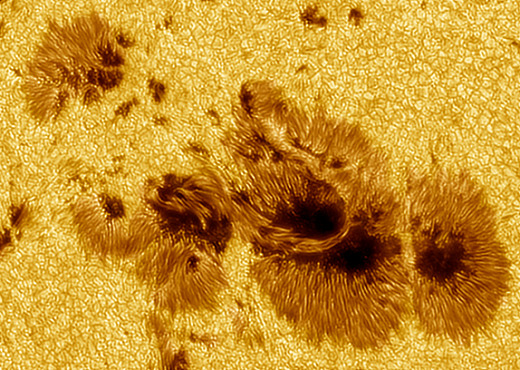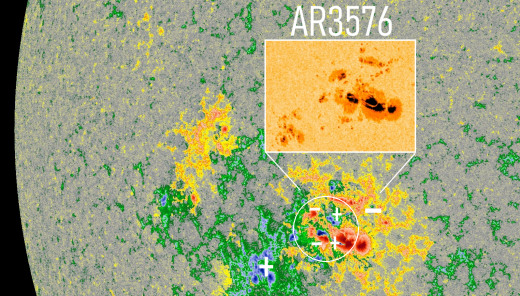X-Class solar flares have potential for everything from radio and satellite disruption to total planetary electrical grid shutdown, depending on strength and polarity. here’s the data from Spaceweather.com
A sunspot so big it was seen last week as far away as Mars has now turned to face Earth. NASA’s Perseverance rover photographed it from Jezero crater, and it has only grown bigger since then. Here’s how AR3576 looked yesterday from Argentina:

“The view was fantastic,” says Eduardo Schaberger Poupeau, who photographed the sunspot using a solar-filtered telescope in the town of Rafaela. “AR3576 appeared as a large archipelago containing a multitude of dark cores.”
In fact, the sunspot is bigger than the picture suggests. There’s even more of it visible in Poupeau’s full frame image. From end to end, the sunspot group stretches more than 200,000 km with at least 4 dark cores larger than Earth. You can see it using ISO-approved eclipse glasses–no magnification required.
AR3576 is big, yes, but of even greater interest is the sunspot’s magnetic complexity. This magnetic map from NASA’s Solar Dynamics Observatory shows a mixture of polarities in the sunspot’s core:

In the circled region, positive and negative magnetic polarities are so closely-packed, you may need to look at this unlabeled map to see them clearly. Opposite polarities bumping together can cause explosive magnetic reconnection. Indeed, NOAA forecasters say this sunspot poses a threat for strong X-class solar flares–and Earth is directly in the line of fire. Stay tuned.
Solar flare alerts: SMS Text
SpaceWeather.com — News and information about meteor showers, solar flares, auroras, and near-Earth asteroids

Get your copy from our Online Store or your local book and magazine retailer
Australian Retail Locations » Uncensored Publications Limited
New Zealand Retail Locations » Uncensored Publications Limited
As censorship heats up and free thought becomes an increasingly rare commodity, we appeal to our readers to support our efforts to reach people with information now being censored elsewhere. In the last few years, Uncensored has itself been censored, removed from the shelves of two of our biggest NZ retailers – Countdown Supermarkets and Whitcoulls Bookstores – accounting for 74% of our total NZ sales.
You can help keep the Free Press alive by subscribing and/or gifting a subscription to your friends and relatives.








